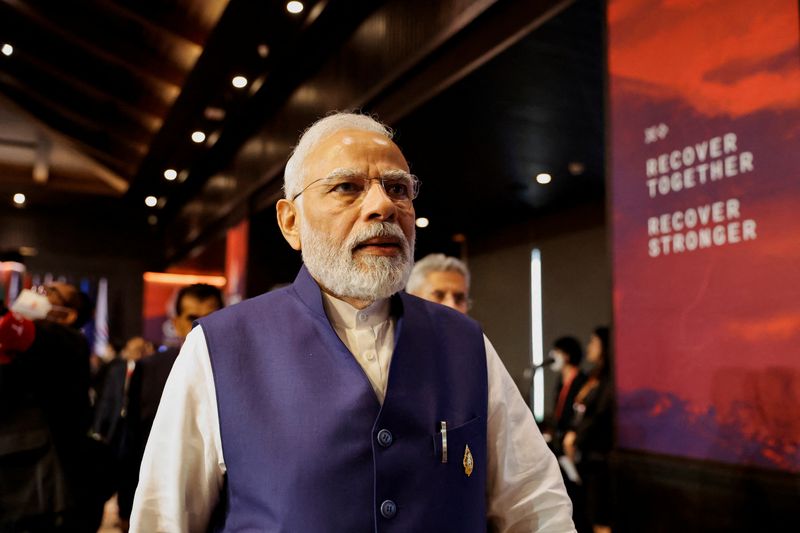India’s Modi cuts aid to poor ahead of elections
2022.12.29 00:15

India’s Modi cuts aid to poor ahead of elections
Budrigannews.com – It is financially sound for Indian Prime Minister Narendra Modi to effectively reduce food rations for the poor in advance of state elections next year and a general election in 2024. However, the charismatic leader’s ability to sell it to voters will play a significant political role.
In India, where food aid is a legal right and more than 800 million people received an additional 5 kg of free rice or wheat in the last 28 months as COVID-19 devastated their finances, subsidizing food and other items is essential to winning elections.
However, the government spent approximately $47 billion on the free food program, which made the fiscal deficit worse and caused wheat stocks in government warehouses to drop to levels not seen in many years.
India will stop providing an additional 5 kg of food aid per person during the COVID-19 pandemic beginning in January and will instead provide 5 kg of free food for a year. However, reducing populist measures before elections is risky.
This month, Modi’s Bharatiya Janata Party (BJP) broke a record in his home state of Gujarat, and it is widely anticipated that it will win the next general election. According to analysts, the facts give him more leeway to enforce fiscal discipline.
The head of the New Delhi think tank Centre for Policy Research, Yamini Aiyar, commented on the decision to reduce the food program, “It’s actually, to my mind, quite clever politics, under the circumstances of fiscal constraints.”
By ending the COVID free food program, the government hopes to save nearly $20 billion annually.
On February 1, Finance Minister Nirmala Sitharaman will present the next fiscal year’s budget. According to a government source, ending the COVID-era free food program will help the government reduce its subsidy burden by about 30% in the upcoming fiscal year and help it reduce its deficit more quickly than anticipated.
According to the source, the government’s subsidy bill for three major items, including food and fertilizer, is likely to fall to less than 4 trillion rupees (48 billion dollars) in the next fiscal year, down from nearly 5.5 trillion rupees in the current fiscal year, which ends on March 31.
The official went on to say that the target for the fiscal deficit in 2023/24 would be cut by at least 50 basis points from 6.4% this year.
As COVID restrictions eased, some economists wanted the food program to end months ago. The government announced last week that the program would end in December and would be replaced by free, subsidized food under a pre-COVID law.
Food is a right guaranteed to the poor in India by a law that has been in effect for a decade.
Subhash Chandra Garg, who left his position as India’s finance secretary three years ago, stated, “Reduction of effective food allocation per person from 10 kg to 5 kg is clearly non-populist.”
“However, it was evident that meeting the calorific requirement did not necessitate this additional food allowance. Therefore, if you can convince the poor that they will receive what they truly need, i.e., 5 kilograms per person, free of charge, the negative effect may be mitigated.
According to Yashwant Deshmukh, founder of polling agency CVoter Foundation, Modi is helped by the fact that there is no obvious challenger to him in the country. Modi is known to be a master at communicating the message he wants voters to receive.
According to CVoter data, Modi has a 60 percent approval rating, while Rahul Gandhi, the leader of the main opposition Congress party, has a 20 percent approval rating.
Yashwant Deshmukh, the founder of CVoter, said, “I think Modi has been carrying out the majority of his decisions thanks to his trustworthiness and popularity.” He was referring to actions like banning high-value currencies in 2016 that caused a lot of distress, but he still easily won many elections after that.
“It’s because people don’t question his motives. Had the trust not been there, and for some other pioneer, it would have been hard to end such a food program in front of races.”
However, senior BJP leader and former minister Ravi Shankar Prasad stated that there should not be any connection made between the decision to reduce food aid and elections or politics.
More TSX futures grow modestly on news from China
“When COVID was present, this started. “Inclusion and empowerment of the poor are important components in the government of Narendra Modi,” he stated.
Races are expected in nine states in 2023 preceding the public survey a year after the fact. Free housing and cooking gas for the poor helped the BJP defeat Congress in the last general election.
According to two government sources, the changes to the food handout will result in a 30% reduction in the total government subsidies for fuel, fertilizer, and food the following fiscal year to less than 4 trillion rupees ($48.27 billion).
In the fiscal year that begins on April 1, one source anticipates that the government will reduce the fiscal deficit by at least 50 basis points to 5.9% of GDP. According to the second, the food subsidy could decrease from nearly 3.2 trillion rupees this year to around 2 trillion rupees in the following fiscal year.
Previously, India’s chief statistician Pronab Sen stated that government warehouses would have run out of grains closer to the general election if the COVID food program had been extended.
Sen stated, “It would have been much more harmful to have to stop it in 2024.”








